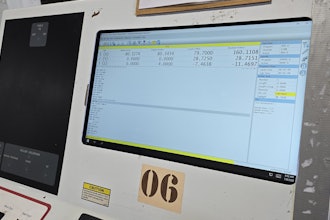
 Zia Siddiqi, Ph.D., B.C.E., Director of Quality Systems, Orkin, LLC
Zia Siddiqi, Ph.D., B.C.E., Director of Quality Systems, Orkin, LLCIf you’re looking for a reason why pest management is so important in food processing facilities, just look at the pests themselves.
Crawling pests like cockroaches and ants can pick up and transfer harmful bacteria. Flies can spread disease-causing organisms when they land – and they land frequently. Rats and mice are known to spread bacteria like Salmonella and E.coli, as well as more than 35 diseases worldwide, such as Hantavirus, according to the Centers for Disease Control and Prevention (CDC).
But pest management is important for reasons that go beyond the actual pests. Take the Food Safety Modernization Act (FSMA) into account, and you’ll realize you have every reason to strengthen your pest control program and documentation efforts.
By FSMA’s standards, you need to not only follow and implement a risk-based prevention program to protect your product and consumer base, but also be audit-ready at any time. Success on your third-party audit hinges on documentation, and the pest management portion can make all the difference in your score – it accounts for up to 20 percent.
Pest control should be a top priority because it positively impacts audit scores, abates health concerns and protects your brand. It’s such a priority that there’s already a blueprint to follow: an ongoing, comprehensive and well-documented Integrated Pest Management (IPM) program.
IPM focuses on continual monitoring and risk-based preventive strategies, like sanitation and facility maintenance, to help prevent pest activity. It’s also the recommended pest management practice for complementing food safety requirements and is designed to meet and exceed the requirements of third-party auditors.
If you’re looking for a licensed pest management provider to implement a custom plan in your facility, ask about IPM right away. If it isn’t in your prospects’ pest control vocabulary, it’s best to move on to a pest management provider who can tailor an IPM program specifically to your needs.

With IPM as your prerequisite, you can narrow your search with these five guidelines.
1. Ask around
Talk with your industry colleagues about their pest management program and how satisfied they are with their provider. If your company is part of a larger network, there may also be a preferred vendor you can check out.
2. Get an inspection of your facility
There’s no need to choose a pest management provider sight unseen. A cornerstone of IPM’s foundation is that a plan is customized for your specific needs. Insist on a thorough inspection to determine what services you need.
3. Be audit-ready: Put your plan in writing
Remember, FSMA requires food processing facilities to develop and execute written risk-based, preventive food safety plans that detail likely hazards, corrective actions and results. You want a provider who not only documents every pest activity sighting and product application, but also uses that documented information to determine pest trends. This will aid in decisions about how to best manage pest activity going forward. Your pest management professional should also work with you to ensure all documents are in proper order and audit-ready at any time.
4. Work together to create reasonable benchmarks
Even with a proactive, responsive pest management partner, creating a near pest-free environment can be difficult – but it’s possible. To reach this goal, you need thresholds. Thresholds dictate how much pest activity and what pests are tolerated and acceptable before corrective actions need to be taken. Thresholds are best set by working with your pest control professional because there are several factors that come into play.
If you are currently battling pests, it will take time to reach your threshold goals – even with a sound IPM plan in place. Talk with the vendors you’re considering about creating a timeline for steady and reasonable improvement.
5. Expand the partnership to your entire staff
For your new pest management program to be effective, your staff has to buy in – and your new provider can help. Your employees play an important role in reporting pest sightings and keeping your facility clean, so ask about resources a pest management provider can offer your staff. Many providers offer staff training and educational resources like tip sheets and checklists at no extra cost.
Once you choose a pest management provider, keep communicating to help determine the roles of everyone involved. Set benchmarks for your IPM program and establish checkpoints throughout the year to evaluate it with your provider so you can reach your pest control goals.
Stay proactive with your provider, and your new partnership can lead to fewer pests and higher audit scores.
Dr. Zia Siddiqi is Director of Quality Systems for Orkin. A board certified entomologist with more than 35 years in the industry, Dr. Siddiqi is an acknowledged leader in the field of pest management. For more information, e-mail [email protected] or visit www.orkincommercial.com.























